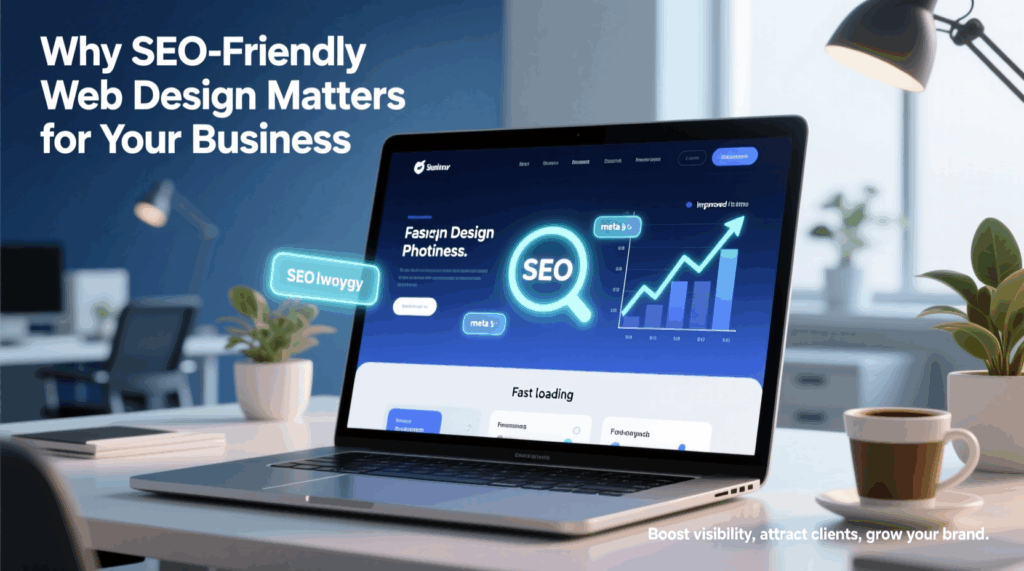Why SEO-Friendly Web Design Matters for Your Business
Introduction:
Your website is often the first point of contact for potential clients. While a visually appealing site can impress visitors, without SEO-friendly design, your business may remain invisible in search results. SEO-friendly web design integrates creative aesthetics with technical and strategic SEO elements to ensure your website not only looks great but also performs exceptionally in search rankings.
Ready to combine beautiful design with high-performing SEO? Book a consultation with Visible Creative today.
What Makes a Website SEO-Friendly?
Page Speed Optimization
Websites that load slowly frustrate users and reduce rankings. Compress images, minify code, and implement caching to maintain fast load times.
Mobile Responsiveness
With over 60% of internet traffic coming from mobile devices, responsive design is essential. Google prioritizes mobile-friendly sites for rankings.
Proper HTML Structure
Use H1, H2, and H3 tags, meta titles, descriptions, and schema markup. This helps search engines understand your content and improves rich snippet visibility.
High-Quality Content
Content should address your audience’s needs, be keyword-optimized, and informative. Search engines reward valuable, engaging content.
Clear Navigation and Internal Linking
Logical menus and internal links help visitors and search engines explore your site efficiently, improving rankings and user experience.
How Creative Design Influences SEO
Your design affects engagement metrics that impact SEO. A well-structured layout, intuitive menus, and visually appealing graphics encourage longer visits and reduce bounce rates, both of which improve search engine rankings.
Case Study: SEO + Design in Action
A recent client site redesign combined UX improvements with on-page SEO strategies. Within six months, organic traffic increased by 65%, demonstrating how design and SEO synergy drives results.
Actionable Tips for an SEO-Friendly Website
- Conduct keyword research before designing pages.
- Optimize images with descriptive alt tags.
- Ensure fast loading speeds through caching and compression.
- Use structured data and schema markup.
- Maintain intuitive navigation and UX for all users.

